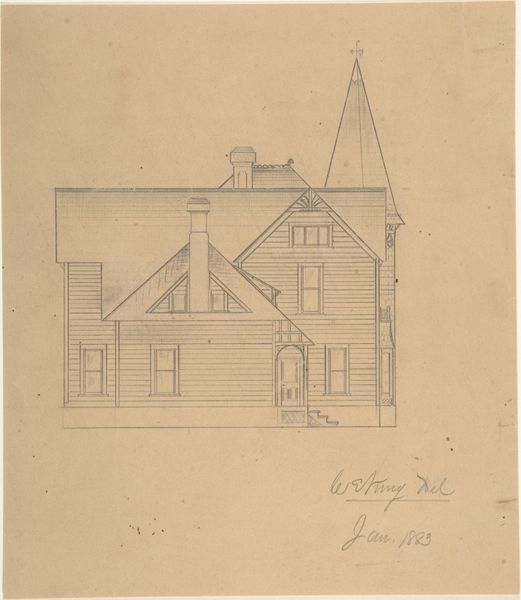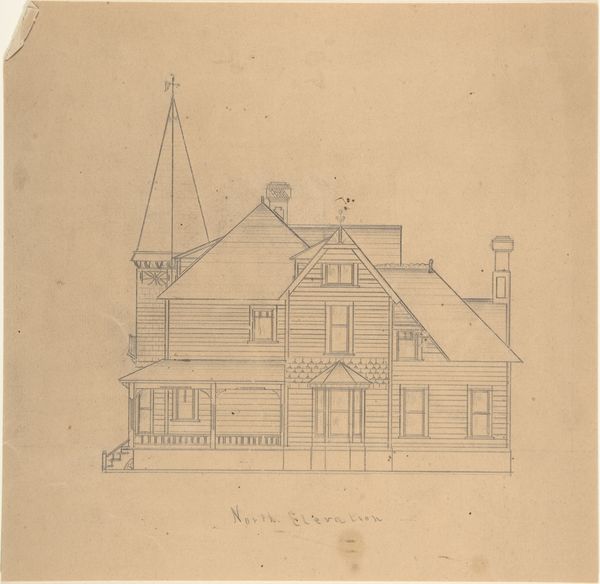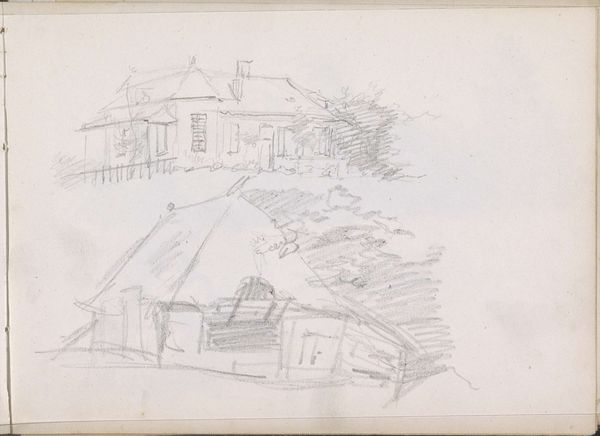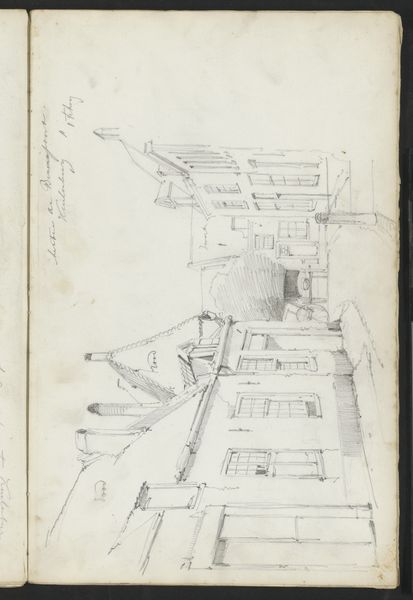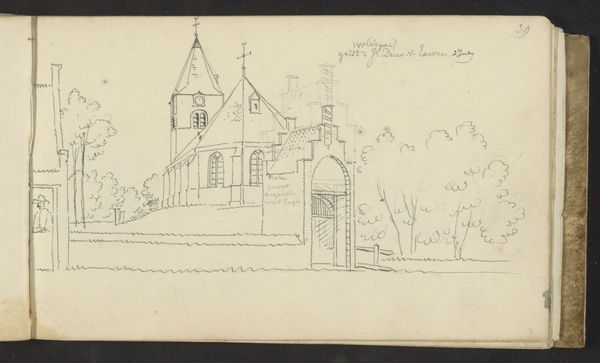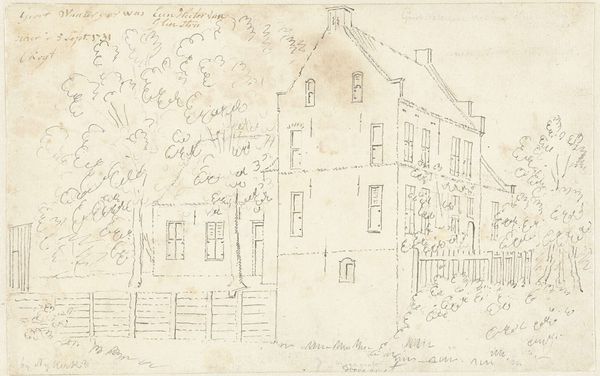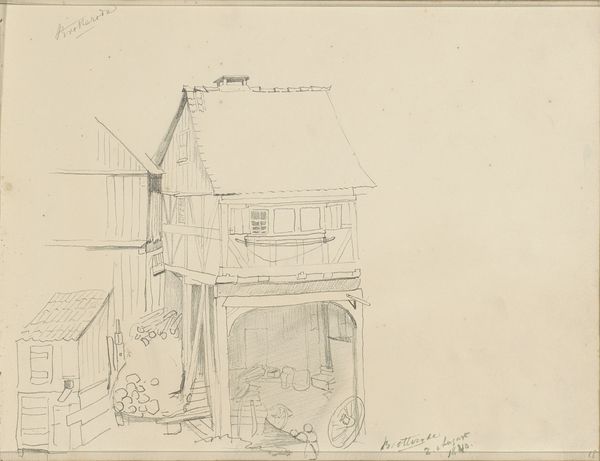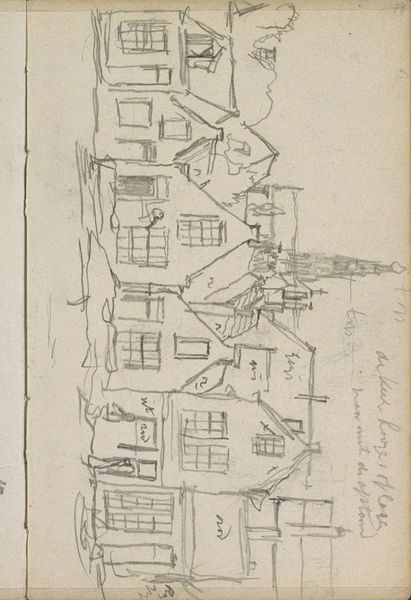
drawing, pencil
#
drawing
#
pencil
#
cityscape
#
realism
Dimensions: 226 mm (height) x 185 mm (width) x 112 mm (depth) (monteringsmaal), 221 mm (height) x 184 mm (width) (bladmaal)
Curator: Immediately, this drawing strikes me as intimate, like a stolen moment from daily life. The soft graphite rendering creates a delicate mood. Editor: Indeed. We're looking at "Studies of Buildings. Notes," a pencil drawing on paper made between 1930 and 1936 by Niels Larsen Stevns. It’s held here at the SMK, the National Gallery of Denmark. I find the sketch quality compelling—almost a record of observation. Curator: It evokes a certain nostalgia, doesn’t it? The lone figure walking past a humble building, perhaps a shop front, hints at urban loneliness, something very pertinent in the interwar period. The architectural details above the shop’s storefront have such lovely, subtle details of ornamentation too, don't they? Editor: Larsen Stevns was known for his Realist style and social engagement, wasn't he? It appears this drawing captures that approach; there's certainly a democratic quality to rendering such an ordinary urban scene with such careful, yet brisk detail. The light here really defines the shape of this urban landscape, suggesting a kind of optimism about finding aesthetic beauty even in this very quiet corner of the city. Curator: Absolutely. And consider the use of line – almost hesitant, yet precise enough to capture the building’s essence. For me, this recalls the flâneur tradition – bearing witness to the shifts in city life that so influenced this period's intellectual environment. Do you think the shopkeeper who lived here in that time was also feeling and sensing those changes, too? I suspect it likely made for complex and intense anxieties! Editor: That’s a rich reading, placing the image within that historical context of urbanization. You know, what stands out for me is the absence of idealization. It's an honest portrayal of architecture as it shapes everyday interactions. As if, perhaps, buildings in this place really were as alive as the person we can see moving through the street. Curator: Yes, this unassuming sketch really reflects its time. Thanks for sharing your sociohistorical perspective; it enriches my reading so much! Editor: The same here—observing its symbolism opens doors for deeper contemplation about collective experience.
Comments
No comments
Be the first to comment and join the conversation on the ultimate creative platform.

